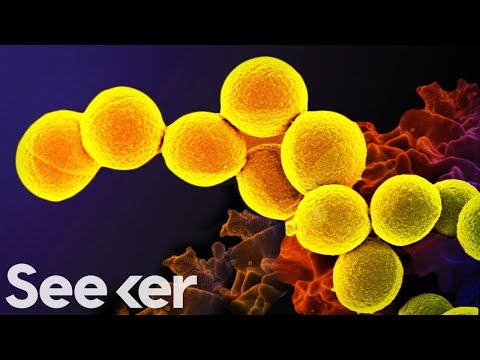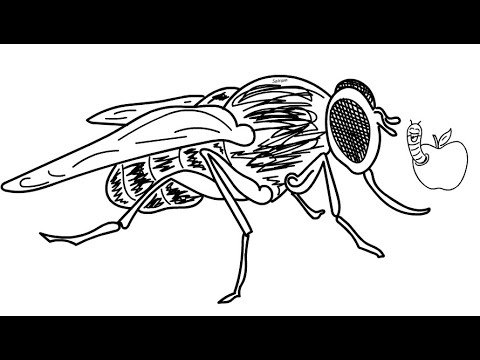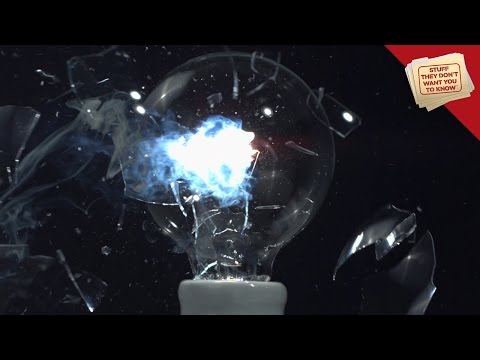10 Most of the Cells in Your Body Aren’t Even Human
The bacterial makeup of your gut is its own biome. It does everything from making you crave sweet, salty junk food to influence your mood. And, your bacteria outnumber you. It might not be comforting to hear, but you have a bona fide ecosystem in your body, with nearly 10 to 1 more bacterial cells than human cells. While bacterial cells are much smaller than your average human cell, they dominate our makeup with sheer numbers, while also possessing an eerie sway over your brain. In recent years, scientists have discovered the extent to which our gut’s health controls our bodies. This has led to groundbreaking procedures such as (warning, this is really gross) fecal transplants, which have weirdly shown very promising effects on weight loss and hormone balance. Watch this video on YouTube
9 The Molecular Material Need to Create Benedict Cumberbatch Costs an Estimated $150,000
Here’s a question a bored scientist might ask himself: How much is a typical human worth? Not their effect on society, or the value of their soul. Rather, how much for the raw materials? The most comprehensive, in-depth conclusion on this likely came from the British Royal Society of Chemistry, who, as part of the 2013 Cambridge Science Festival, quantified the cost of all the atomic material necessary to build the actor Benedict Cumberbatch. Watch this video on YouTube They took what scientists already knew about humans’ makeup (61% Oxygen, 10% hydrogen, 2.6% Nitrogen, etc.), applied it to the mass of a Cumberbatch, and started working out the cost for each raw element. Their conclusion: $14 for the oxygen, $26 for the hydrogen, a measly forty cents for the nitrogen, a whopping $69,550 for his 30 pounds of carbon (not just any carbon will do, only the purest of carbon for the British Royal Society’s Cumberbatch) and many thousands more for all the trace elements. This leaves us with a confoundingly precise $151,578.46 as the cost for the 59 elements needed to make a human, to the specifications of one Benedict Cumberbatch. Labor not included.
8 “Spontaneous Generation” Was the Prevailing Theory Among Scientists For Over a Millennium
Spontaneous generation is the idea that living creatures could come into existence from organic, but ultimately dead, matter. According to the theory, certain substances, such as cuts of raw meat, would spontaneously generate flies and maggots if left in the “proper” conditions. Another example was the sudden existence of mice appearing on pieces of cheese or bread left out in dark, isolated spaces. Watch this video on YouTube It seemed the great Aristotle first proposed the obvious explanation for the appearance of flies and mice. But by the 1700s it was pretty clear that complex, higher-order life doesn’t originate from dead material. Still, even great minds like Darwin dodged the question. In a professional showdown with biologist Felix Pouchet, it finally took Louis Pasteur to put that last nail in the coffin of spontaneous generation with his famous Swan-Neck flask experiment in 1861. This was a major win for Pasteur, Science, and the development of modern germ theory.
7 Water Can Be “Supercooled” Below its Freezing Point
Everyone in science class learns about the boiling and freezing points of water. Water stays liquid between 32 and 212°F (0 and 100°C for you Canadians). Water is also a uniquely weird molecule: it expands in solid form, has a molecular polarity, and even has its own type of bonding called hydrogen bonding. The polarity of the H2O’s famous Mickey Mouse shape is what causes ice crystals to form in a high volume, lattice structure. Like snowflakes, these ice crystals need something to latch on to in order to grow, such as impurities floating in the water. Pure, distilled water doesn’t have such impurities, and as a result, pure water can be “supercooled” to well below its freezing point. Watch this video on YouTube What’s the point of supercooling your water bottles, you say? Snap freezing of course! That’s where the water freezes instantly once any impurities, or even air bubbles, are introduced. That’s right! Just tap a supercooled water bottle for it to turn into solid ice. Cool right?
6 There’s a Microscopic Animal That Can Survive in Outer Space
That unearthly being would be a tardigrade. What are tardigrades you ask? They go by many names: “water bear,” “moss piglet,” tiny sentient marshmallow overlords, etc. While these eight-legged freaks aren’t as immortal as hyped, tardigrades do have several hibernation processes at their disposal that allow them to survive extreme situations. Watch this video on YouTube With cryobiosis, they can survive several days at -200c by lowering their metabolism to <0.01% of normal. Through anhydrobiosis, they can survive without water by creating a glass-like sugar called trehalose. Trehalose replaces the water in their cells, preventing cell damage. And with anoxybiosis, tardigrades can do the unthinkable. They can survive extreme pressure without oxygen in places like outer space by swelling their bodies into a rigid, near-dead state, called Tuns. Scientists tested this in an experiment by the European Space Agency in 2007 where 3,000 water bears survived in a space vacuum for over a week. While tardigrades aren’t actually immortal (lifespans vary from 2 weeks to 100 years), their uncanny ability to survive extremes astonished even unflappable Israeli scientists.
5 Nikola Tesla Had a Plan to Provide Free, Wireless Electricity to the World
Nikola Tesla was that rare kind of genius that was leaps and bounds ahead of his time. Often misunderstood in his own time, today Tesla is generally known for his advancement of Alternating Current (A.C.), his rivalry with Thomas Edison, and being the future inspiration for some pretty awesome cars. His work in Colorado Springs, where he created his Tesla Coils and proved he could wirelessly power light bulbs, was a warm-up to his grand idea. With J.P. Morgan’s financial backing, Tesla directed the construction of the giant 187-foot Wardenclyffe Tower (anchored 300 feet down into the New York soil). This feat of engineering would have been the mechanism to transmit power freely across the world. Sadly, it wasn’t meant to be. As money ran out for the tower, J. P. Morgan, fearful of the financial damage-free energy would cause, refused to further fund the project. The tower was never finished and was razed to the ground in 1917. ” It is not a dream,” Tesla said, “it is a simple feat of scientific electrical engineering, only expensive—blind, faint-hearted, doubting world!”
4 Medical Mistakes Are the Third Leading Cause of Death in the U.S.
On the CDC’s list of leading causes of death, you’ll find heart disease, cancer, accidental injury, and respiratory disease at the top. You won’t find medical mistakes listed. If deaths caused by medical mistakes were listed accurately, they’d be a solid third, year after year. According to a John Hopkins study, upwards of 250,000 people in the United States die every year because of medical mistakes. Other sources, such as Dr. George Stanislaw, report 195,000 yearly patient deaths from preventable mistakes. Some estimates are as high as 440,000 preventable deaths each year. The uncertainty over figures arrives from the fact that doctors, nurses, medical directors, and coroners rarely note the human errors and systemic problems involved in these fatalities. This creates a problem for accurate mortality rankings, as death certificates are what the CDC uses for death counts. The John Hopkins study’s authors, led by Dr. Martin Makary, define death due to medical error as one caused by inadequately skilled staff, error in judgment or care, a system defect, or a preventable adverse effect. “Top-ranked causes of death as reported by the CDC inform our country’s research funding and public health priorities,” says Makary. “Right now, cancer and heart disease get a ton of attention, but since medical errors don’t appear on the list, the problem doesn’t get the funding and attention it deserves.”
3 Radiometric Dating is Not 100% Accurate
Radiometric dating estimates the ages of rock based on the decay of the radioactive elements in them. Radioactive elements decay into more stable elements over a generally predictable amount of time. We use this method to determine the age of anything prior to ~50,000B.C., which is considered the point beyond which Carbon-14 dating can reliably predict. If radiometric dating were an equation, it might look something like Decay Rate + Backward Calculations = Rock Age. One problem with this method is the assumptions baked into the cake of that analysis. For example, it’s generally assumed that the decay rate of radioactive elements trapped in rocks remains constant from the time the rock formed. This assumes that no outside forces changed the rock’s radioactive makeup and that the initial conditions of the rock were always typical. We now know that these idealized conditions are rarely the case, and therefore it becomes apparent that historical context is needed in order to get a more accurate geological assessment. Thus, accurate dating methods require both observational science(such as decay rates) and historical science(initial conditions) to make accurate age estimates.
2 Seventy Percent of the U.S. Needs More Vitamin D
Whether you consume Vitamin D in foods or receive it indirectly from the sun, you’re probably not getting enough of it. Even the name “Vitamin D” is something of a misnomer, as it behaves much closer to a hormone than a vitamin. In the body it’s converted to a steroid hormone called calcitriol that affects several vital functions such as bone density, muscle growth, immune system vitality, aging, and even improves your mood. Watch this video on YouTube While the Endocrine Society defines vitamin D deficiency as a blood serum level below 20ng/ml, anything below 30ng/ml is considered inadequate, and you may experience significant symptoms. Shockingly, the global average vitamin D level is around 20ng/ml, according to a meta-analysis of several studies. In the U.S., about 70% of us have levels below 30ng/ml. Overall Vitamin D serum levels have dropped in recent years, with possible causes including increased sunscreen use, decreased outdoor activity, and obesity. During a global pandemic, it should be especially concerning that we have a global deficiency in a hormone that’s necessary for a strong immune system. It’s also worth noting that darker-skinned individuals living in northern, gloomy climates are at a much-increased risk of vitamin D deficiency.
1 Incandescent Light Bulbs Made a Century Ago Lasted Much Longer Than They Do Today
Ever heard of the Phoebus Cartel? They introduced the concept of “planned obsolescence” into their business model. Designing their products to fail early, thereby forcing you to buy replacements. It’s as messed up as it sounds. In 1924, the leading light bulb manufactured of the day banded together to form the Swiss corporation, the Phoebus Cartel. Watch this video on YouTube These once rivals, Philips, Osram, Tungsram, ELIN, and General Electric, conspired to fix prices and limit competition by controlling the market. They even re-engineered their own products to create bulbs with a shorter lifespan, thereby driving up price and demand. Prior to 1924, light bulbs could be expected to last 2,500 hours, if not longer. There are instances of these early bulbs lasting over a hundred years. The Pheobus Cartel decided to shorten all bulb-life to an average of 1,000 hours, and that’s what we’re still stuck with today, a century later.
























